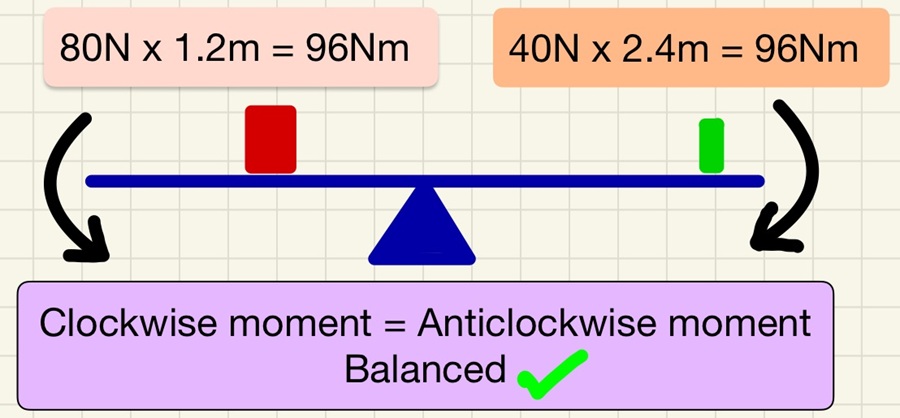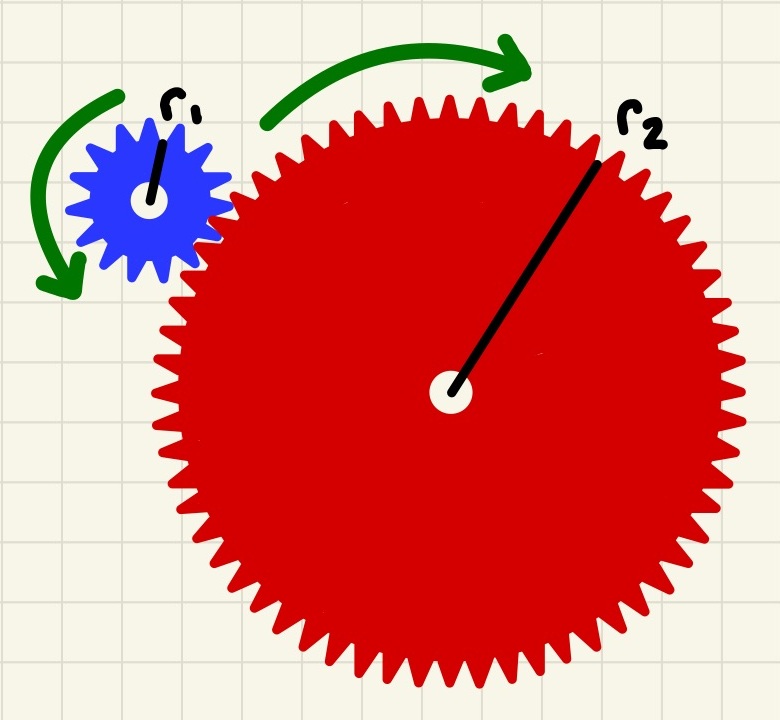Key Stage 3 Engineering Physics
What we are learning:
Moments, the principle of turning forces and calculations:

In this topic, you will learn that turning forces are affected by the size of the force and the length of the lever. The moment of a force can be calculate using this formula:
Moment (Nm) = force (N) x perpendicular distance (m)
There are lots of examples that you will meet and work through from the length of a spanner to explaining why a canal lock gate has such a long beam attached. Once you have studied this, you will see lots of examples in everyday life that you will be able to apply your knowledge to.
Gears:

Gears is another example of everyday life being explained by physics. Why is it easier to peddle up hill in first gear on a bike? Why do I turn the can opener through lots of complete revolutions and it hardly moves around the can? By investigating the gears you will see the link between the ratio of numbers of teeth on a cog or the ratio of the circumferences and the rate of rotations. By applying what you have learned from levers in the previous topic, you can see that there are opportunities to "make something easier". This, like with levers can be called a force multiplier. As this is a turning force, we can use moments. Moment = Force x distance. With gears, distance is always the radius of the gear (shown as r1 and r2) as shown on the diagram.
Colours that we see and the eye:

Here is our chance to progress from understanding colours of the rainbow and what colours are produced when we mix certain other colours. Unlock the science behind primary colours, light filters and their effects.
From the first eye in the fossil record, the compound eye of the trilobite, our eyes are remarkable, you will learn how they work and how they detect the world around us and tell our brains what is there. You will also learn how we can use science to help our eyes if they need a little help to focus.
Refraction of light:

Light can be forced to bend. Different transparent materials have a different refractive index. If light passes from one medium to another, the light will bend. You will be able to investigate these in the class and measure how much the rays of light bend or refract.
Sight problems:

Not everyone has perfect vision, if your eye is slightly misshapen, when the lens focuses the light that has reflected off the object that you are looking at, it might not focus onto your retina. Long sightedness and short sightedness cane be corrected with lenses in either glasses or contact lenses.
Different lenses:

Different lenses can make light rays come together (converge) or move apart (diverge). These different lenses can be used to correct your vision, make projectors share images in focus or even make it so that your torch beam either spreads out the light or aims it while you are trying to locate where your dog had a poo in the dark!
Key words/terms for this topic
Effort Fluid Force Gas Hydraulic Lever Liquid Load Metre (m) Moment Newton (N) Newton metre (Nm) Pascal (Pa) Pivot Pressure Square metre (m2) Volume
Curriculum Health Check:
Q: When are the questions for this topic coming?
A: Before you retire
B: Never
C: Soon
D: In a month of Sundays
What you need to know
Learning:

Identify an obvious lever and label the effort pivot and load.

State whether a lever is being used as a force multiplier or a distance multiplier.

State that a moment is the turning effect caused by a force. State the Principle of Moments.

Calculate simple moments using the correct units.

Describe what happens to moments and forces when an object is in equilibrium.

Investigate the forces and distances involved in pulley systems.

State that energy is conserved in mechanical systems.

Describe pressure in terms of a force acting on an area.

State that pressure is increased when the area is small or the force is large.

Calculate the pressure acting on a surface with some assistance.

State that atmospheric pressure acts on all surfaces within the atmosphere.

State that atmospheric pressure decreases with height above sea level.

Describe the cause of pressure in liquids in simple terms (e.g. the weight of the water above).

State that the pressure in liquids increases with depth.

State that forces can be transferred through liquids because liquids are not easy to compress.

Mastering:

Calculate the speed of objects using the equation and a range of units.

Describe the rotation of a lever clearly. Describe the function of a wide range of levers including force and distance multipliers.

State that forces are mechanisms that transfer energy (do work). Describe forces as the mechanism for energy transfer in mechanical systems.

Investigate the factors that affect the turning effect of a force. Convert length units to calculate the moment of a force. Determine whether an object is in equilibrium by calculating moments.

Describe the factors that will increase the pressure acting on a surface, and calculate the pressure acting on a surface with some assistance. Describe the cause of pressure in gases in simple terms.

Use secondary data to investigate the variation of atmospheric pressure with height.

Describe how pressure within a liquid can produce an upthrust due to differences in pressure.

Describe the operation of hydraulic machines in terms of movement of the hydraulic fluid.

Expanding:

State that a lever can be used to increase the size of force acting on the load at the cost of reducing the distance the load is moved. Use scale diagrams to describe the forces acting on a lever.

Calculate the work done by a lever; design an experiment to measure the work done by a lever.

Rearrange the moment equation to calculate distances and forces. Calculate the total moment when more than one force acts in the same direction of rotation. Determine the missing forces or distances in equilibrium situations.

Explore systems with more than two forces acting. Calculate work done in mechanical systems. Evaluate systems and identify reasons for energy loss.

Describe a wide range of applications of high pressure relating them to the area of contact between objects. Describe the relationship between the forces acting on the two cylinders and the cross-sectional area of the hydraulic cylinders. Rearrange the pressure equation to calculate forces and area.

Provide simple explanations about why pressure decreases with height above sea level.

Use the particle model to describe the cause of pressure in gases and why pressure increases with depth in a liquid. Compare pressure changes in different fluids.

This page was updated on: 6th April 2024


